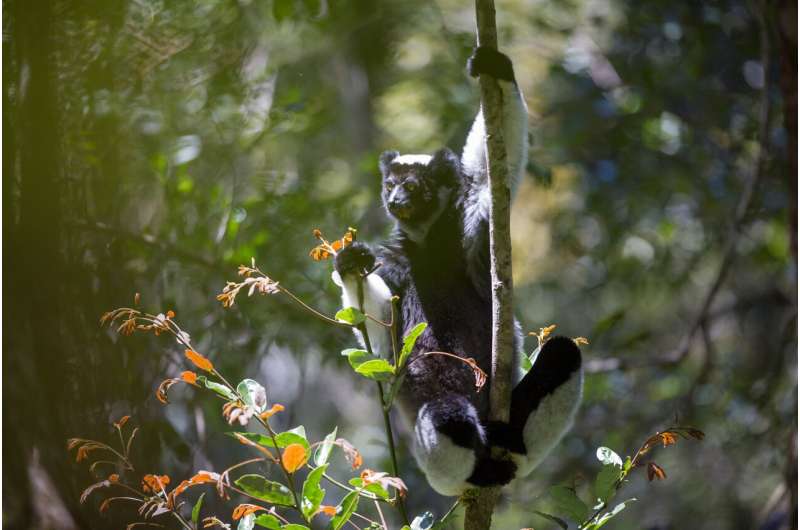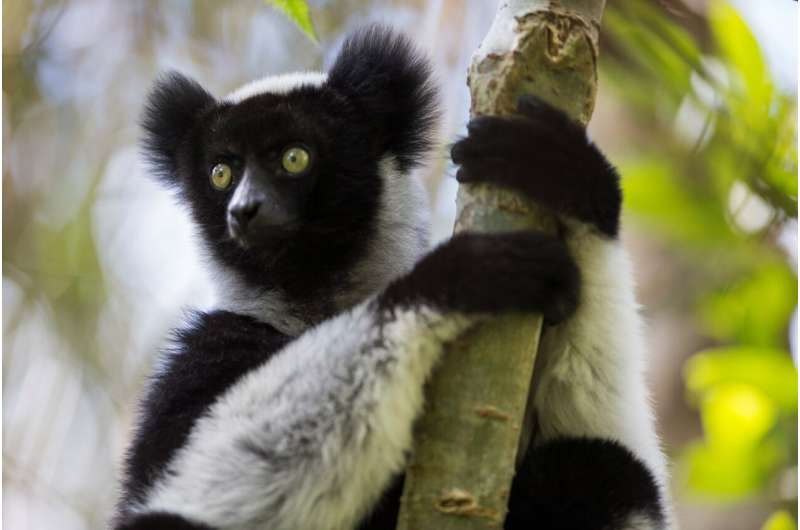#Looking for musical abilities in primates

“#Looking for musical abilities in primates”

Songbirds share the human sense of rhythm, but it is a rare trait in non-human mammals. An international research team led by senior investigators Marco Gamba from the University of Turin and MPI’s Andrea Ravignani set out to look for musical abilities in primates. “There is longstanding interest in understanding how human musicality evolved, but musicality is not restricted to humans,” says Ravignani. “Looking for musical features in other species allows us to build an ‘evolutionary tree’ of musical traits, and understand how rhythm capacities originated and evolved in humans.”
To find out whether non-human mammals have a sense of rhythm, the team decided to study one of the few ‘singing’ primates, the critically endangered lemur Indri indri. The researchers wanted to know whether indri songs have categorical rhythm, a ‘rhythmic universal’ found across human musical cultures. Rhythm is categorical when intervals between sounds have exactly the same duration (1:1 rhythm) or doubled duration (1:2 rhythm). This type of rhythm makes a song easily recognizable, even if it is sung at different speeds. Would indri songs show this “uniquely human” rhythm?
Ritardando in the rainforest
Over a period of 12 years, the researchers from Turin visited the rainforest of Madagascar to collaborate with a local primate study group. The investigators recorded songs from twenty indri groups (39 animals), living in their natural habitat. Members of an indri family group tend to sing together in harmonized duets and choruses. The team found that indri songs had the classic rhythmic categories (both 1:1 and 1:2), as well as the typical ‘ritardando’ or slowing down found in several musical traditions. Male and female songs had a different tempo but showed the same rhythm.
According to first author Chiara de Gregorio and her colleagues, this is the first evidence of a ‘rhythmic universal’ in a non-human mammal. But why should another primate produce categorical ‘music-like’ rhythms? The ability may have evolved independently among ‘singing’ species, as the last common ancestor between humans and indri lived 77.5 million years ago. Rhythm may make it easier to produce and process songs, or even to learn them.

Endangered species
“Categorical rhythms are just one of the six universals that have been identified so far,” explains Ravignani. “We would like to look for evidence of others, including an underlying ‘repetitive’ beat and a hierarchical organization of beats—in indri and other species.” The authors encourage other researchers to gather data on indri and other endangered species, “before it is too late to witness their breath-taking singing displays.”
Antiphonal singing in indris
Categorical rhythms in a singing primate, Current Biology, 2021.
Citation:
Looking for musical abilities in primates (2021, October 25)
retrieved 25 October 2021
from https://phys.org/news/2021-10-musical-abilities-primates.html
This document is subject to copyright. Apart from any fair dealing for the purpose of private study or research, no
part may be reproduced without the written permission. The content is provided for information purposes only.
If you liked the article, do not forget to share it with your friends. Follow us on Google News too, click on the star and choose us from your favorites.
For forums sites go to Forum.BuradaBiliyorum.Com
If you want to read more Like this articles, you can visit our Science category.




